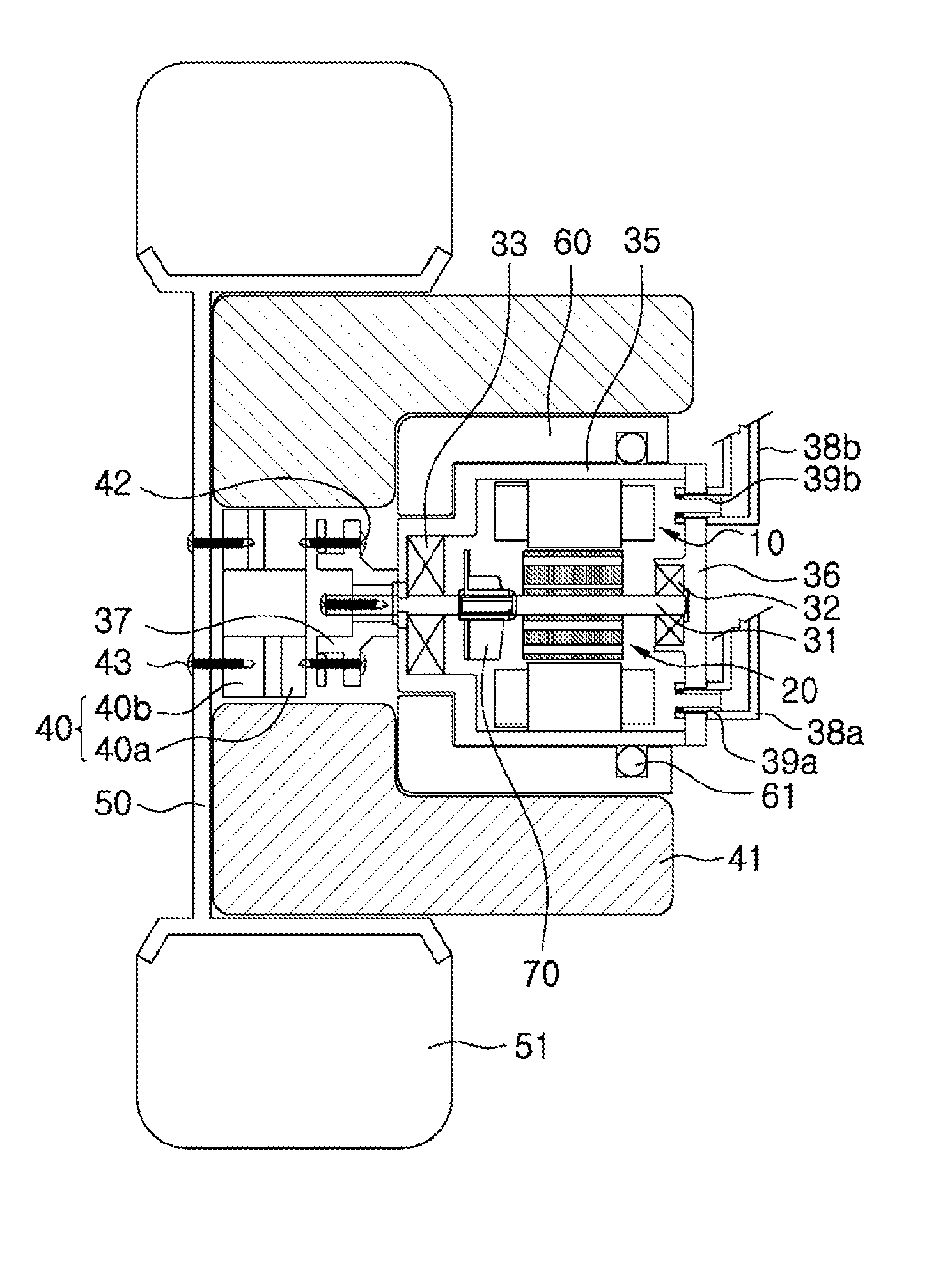Amorphous magnetic component, electric motor using same and method for manufacturing same
a technology of amorphous magnetic components and electric motors, applied in the direction of magnetic circuit rotating parts, magnetic bodies, magnetic circuit shapes/forms/construction, etc., can solve the problems of affecting the efficiency of the motor, requiring complex and expensive coil winding equipment, and a lot of time on winding operations, so as to improve the permeability, improve the permeability, and facilitate the insertion of magnetic components.
- Summary
- Abstract
- Description
- Claims
- Application Information
AI Technical Summary
Benefits of technology
Problems solved by technology
Method used
Image
Examples
example 1
[0107]Amorphous alloy ribbons of a composition Fe78—Si9—B13 prepared by a melt spinning process were heat-treated at 300° C. in the air for one hour, to thus obtain preliminarily heat-treated amorphous alloy ribbons. The amorphous alloy ribbons were pulverized with a crusher, to thus obtain amorphous alloy powder, and then the amorphous alloy powder was classified into amorphous alloy powder with an average powder particle size of 20 to 50 μm, and amorphous alloy powder with an average powder particle size of 50 to 75 μm, through classification and weighing processes, to thus obtain a mixture of powder mixed at a ratio of 50% by weight of the amorphous alloy powder with an average powder particle size of 20 to 50 μm and 50% by weight of the amorphous alloy powder with an average powder particle size of 50 to 75 μm. Here, an aspect ratio of the obtained amorphous alloy powder was in the range of about 1.5 to 3.3.
[0108]Fe—Si—Al-based Sendust powder was mixed with amorphous alloy powde...
example 2
[0115]Amorphous alloy ribbons of a composition Fe735—Cu1—Nb3—Si135—B9 prepared by a melt spinning process were heat-treated at 540° C. under a nitrogen atmosphere for 40 min, to thus obtain nanocrystalline ribbons. The nanocrystalline size was in the range of 10 to 15 nm. The nanocrystalline ribbons were pulverized with a crusher to obtain nanocrystalline alloy powder, and then the nanocrystalline alloy powder was classified into nanocrystalline alloy powder with an average powder particle size of 20 to 50 μm, and nanocrystalline alloy powder with an average powder particle size of 50 to 75 μm, through classification and weighing processes, to thus obtain a mixture of powder mixed at a ratio of 50% by weight of the nanocrystalline alloy powder with an average powder particle size of 20 to 50 μm and 50% by weight of the nanocrystalline alloy powder with an average powder particle size of 50 to 75 μm. Here, an aspect ratio of the obtained nanocrystalline alloy powder was in the range ...
PUM
| Property | Measurement | Unit |
|---|---|---|
| aspect ratio | aaaaa | aaaaa |
| aspect ratio | aaaaa | aaaaa |
| frequency | aaaaa | aaaaa |
Abstract
Description
Claims
Application Information
 Login to View More
Login to View More - R&D
- Intellectual Property
- Life Sciences
- Materials
- Tech Scout
- Unparalleled Data Quality
- Higher Quality Content
- 60% Fewer Hallucinations
Browse by: Latest US Patents, China's latest patents, Technical Efficacy Thesaurus, Application Domain, Technology Topic, Popular Technical Reports.
© 2025 PatSnap. All rights reserved.Legal|Privacy policy|Modern Slavery Act Transparency Statement|Sitemap|About US| Contact US: help@patsnap.com



